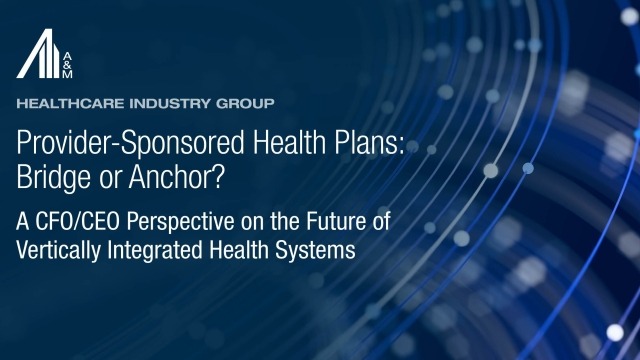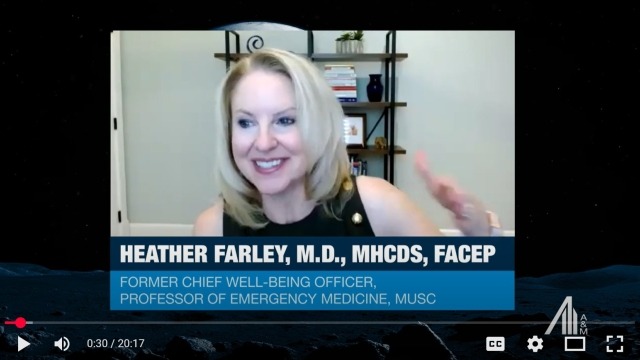Recipient of Provider Relief Funds? How to Best Position Yourself for Future Oversight and Enforcement Activities
The Coronavirus Aid, Relief, and Economic Security Act (CARES Act) and other related legislation have appropriated more than $175 billion in funding for distribution through the Public Health and Social Services Emergency Fund (Provider Relief Fund) to healthcare providers. The Secretary of the U.S. Department of Health and Human Services (HHS) has been given broad discretion to award grants to healthcare providers who incur costs responding to the coronavirus pandemic or have lost revenues attributable to the pandemic. As of June 10, 2020, HHS has designated more than $100 billion for funding through “General Distributions” to hospitals, physicians and other providers and “Targeted Distributions” to rural hospitals, safety net hospitals, Indian Health Service hospitals and hospitals in “High Impact” coronavirus case zones. Healthcare providers that receive distributions from the Provider Relief Fund (Recipients) are required to comply with specified terms and conditions and complete attestations certifying to such compliance.
Non-compliance with any term or condition will serve as grounds for HHS to recoup some or all of the payments received. Provider Relief Fund Recipients who violate the terms of the grants are also subject to civil and criminal prosecutions for fraud under the federal False Claims Act (FCA). The FCA provides for civil penalties of up to $23,331 per claim, plus three times the amount of actual damage to the government and can result in imprisonment. HHS also has the authority to impose administrative penalties including revocation of Medicare billing privileges, exclusion from federal healthcare programs and/or fines, civil damages and/or imprisonment.
HHS has indicated it will carry out significant anti-fraud monitoring of the distributed funds. The HHS Office of Inspector General (OIG) is providing fraud oversight as required in the CARES Act. Recently, the OIG released its strategic plan for oversight of the COVID-19 response and recovery efforts. One of its key planning and oversight goals is to protect the funds appropriated to HHS, including the $175 billion for the Provider Relief Fund, and ensure they are used appropriately. The OIG’s oversight efforts will include audits of Recipients to assess whether they met use, reporting and other requirements, and where appropriate, recommend the recovery of misspent funds. The OIG also announced that it will use risk assessment and data analytics to identify, monitor and target potential fraud, waste and abuse affecting HHS programs and beneficiaries.
Because of the significant retrospective oversight HHS has over Provider Relief Fund grants, Recipients should be acutely focused on ensuring compliance with the terms and conditions. This article outlines some immediate steps that Recipients should take to demonstrate compliance with funding requirements and to best position for future audit and enforcement activities.
COVID-19 Relief Funding Sources
Many financial relief opportunities have been made available through the CARES Act and various other funding sources, including insurance, state and other federal programs. Identifying and understanding applicable COVID-19 relief funding sources, where they overlap and how they are distinct, is critical to ensuring appropriate use and compliance with the terms and conditions of each distribution. Therefore, it is imperative that Recipients have a clear understanding of how funding sources are sought and obtained, as well as the designated use for each source. Recipients should develop a framework, such as a checklist, for tracking the requirements, distinctions and use of each distribution. This includes tracking important dates to ensure the organization has sufficient time to conduct due diligence prior to each attestation deadline. Receipt of funds from one source may impact the organization’s eligibility for funding from another source.
COVID-19 Expenses and Lost Revenues
The CARES Act language, as well as the Terms and Conditions imposed by HHS on all Provider Relief Fund payments, stipulates that all grants made by HHS may only be used to prevent, prepare for and respond to coronavirus, or to reimburse the Recipient for healthcare-related expenses or lost revenues attributable to coronavirus.
Receipt of both General Distributions and certain Targeted Distributions requires certification that the payments shall reimburse the Recipient only for healthcare-related expenses or lost revenues attributable to coronavirus.
HHS has indicated that the term “healthcare-related expenses attributable to coronavirus” (COVID-19 Expenses) is broadly defined to cover a range of items and services purchased to prevent, prepare for and respond to coronavirus. HHS has listed the following examples that fall under this category:
- Supplies used to provide healthcare services for possible or actual COVID-19 patients
- Equipment used to provide healthcare services for possible or actual COVID-19 patients
- Workforce training
- Developing and staffing emergency operation centers
- Reporting COVID-19 test results to federal, state or local governments
- Building or constructing temporary structures to expand capacity for COVID-19 patient care, or to provide healthcare services to non-COVID-19 patients in a separate area from where COVID-19 patients are being treated
- Acquiring additional resources, including facilities, equipment, supplies, healthcare practices, staffing and technology to expand or preserve care delivery
HHS has said that Providers can use their Provider Relief Fund payment for such COVID-19 Expenses incurred on any date although it expects that it would be highly unusual for providers to have incurred eligible expenses prior to January 1, 2020.
Recipients should carefully gather and track COVID-19 Expenses, ensuring they meet the required purpose and do not include any of the prohibited expenses specified in the statutory provisions of the terms and conditions. Consider utilizing approaches such as:
- Establishing general ledger accounts for each major type of COVID-19 Expense
- Creating COVID-19 specific expense accounts and defining what should be coded to them
- Instituting review and approval processes for expenditures that will be categorized as COVID-19 Expenses
HHS has defined “lost revenues that are attributable to coronavirus” to mean any revenue that a healthcare provider lost due to coronavirus (Lost Revenues). They may include revenue losses associated with fewer outpatient visits, canceled elective procedures or services, or increased uncompensated care. Providers can use Provider Relief Fund payments to cover any cost that the Lost Revenues otherwise would have covered, so long as that cost prevents, prepares for or responds to coronavirus. These costs do not need to be specific to providing care for possible or actual coronavirus patients, but the Lost Revenues that the Provider Relief Fund payment covers must have been lost due to coronavirus.
HHS suggests that a Provider can use Provider Relief Funds to cover Lost Revenues in ways to help the Provider respond to the coronavirus public health emergency by maintaining healthcare delivery capacity, such as by using Provider Relief Fund payments to cover items such as:
- Employee or contractor payroll
- Employee health insurance
- Rent or mortgage payments
- Equipment lease payments
- Electronic health record licensing fees
Recipients should utilize reasonable methods to estimate Lost Revenues including, but not limited to:
- Comparing budgeted revenue prepared without considering the impact of COVID-19 to actual revenue
- Comparing revenues to the same period of the previous year
Regardless of the method utilized, Recipients should develop narratives to support assumptions and approaches for calculating Lost Revenues. Recipients should also maintain detailed documentation of COVID-19 Expenses and Lost Revenues, including projections and assumptions utilized to support requests.
Appropriate Use of Distributions/No “Double Dipping”
Disbursements from the Provider Relief Fund may only be used to prevent, prepare for and respond to coronavirus, and shall only reimburse a provider for COVID-19 Expenses and Lost Revenues. Organizations should establish a process to not only track the receipt of funding related to COVID-19 relief, including proceeds from business interruption insurance, but also the specific justification for accepting such funds (e.g. COVID-19 Expenses, Lost Revenues). Additionally, Recipients cannot use the payments to reimburse COVID-19 Expenses and Lost Revenues that have been reimbursed from other sources or that other sources are obligated to reimburse. Carefully tracking the use of funds within the organization will help show that they are not utilizing more than one source of funding for the same COVID-19 Expense or Lost Revenue (i.e. “double dipping”).
HHS reserves the right to audit Recipients in the future and collect any Provider Relief Fund payments that were used inappropriately.
Attestations and Documentation
HHS has created a formal, written attestation process that must be completed by the specified deadline in order for a Recipient to keep any of the disbursed funds. Recipients must be able to truthfully and accurately attest to each Provider Relief Fund distribution received. Non-compliance with any term or condition is grounds for HHS to recoup some or all of the payments received and impose fines and penalties.
Recipients should determine how to best support and document the reasoning behind each of their attestations. This includes gathering documentation to support each term and condition contemporaneously rather than waiting for an inevitable OIG audit. Recipients should consider using a comprehensive checklist that details the specific requirements for each distribution and document the basis for meeting each term and condition. The checklist should also include a specific “documentation” column to allow for easy reference to all supporting information/documents for each item. The actual underlying documentation should be stored in a central location.
To further support the attestation, Recipients may want to consider implementing a sub-certification process for specific items within the terms and conditions, such as those regarding balance billing or prohibited uses of funds.
Recipients should also consider developing and implementing policies addressing compliance with the various terms and conditions for funds received. An overarching policy that describes how the organization will comply with the Provider Relief Fund terms and conditions will demonstrate the organization’s commitment to upholding the requirements of all applicable terms and condition. Additional targeted policies, such as one addressing the prohibition of balance billing, may also be beneficial. As with any new policy, training applicable staff and documenting such training and any associated materials is important.
Additional Diligence Activities
Once a Recipient accepts a distribution from the Provider Relief Fund and certifies to compliance with applicable terms and conditions, they have ongoing compliance obligations. If necessary supporting documentation has not been created and/or compiled, Recipients should complete this action as soon as possible. Doing so becomes more difficult the further the Recipient is from the actual time of receipt and acceptance of distributions.
Recipients should consider keeping a log of regulatory guidance available at the time of each attestation. Government guidance is being disseminated at record speed and understanding the information and guidance provided “at the time of attesting” may be important when government audits occur. Therefore, maintaining this guidance contemporaneously with the attestation will provide additional support of the Recipient’s understanding of the terms and conditions.
In preparation for anticipated OIG oversight actions, Recipients should conduct and document internal monitoring activities focusing on areas such as the use of funds, double dipping and balance billing.
Summary
The Provider Relief Fund is one of the largest federal health care relief efforts ever created. Because billions of dollars have been appropriated to this relief, significant retrospective oversight will follow. Oversight efforts by the OIG are already underway and will ultimately expand. Creating effective compliance controls now will help Recipients avoid common pitfalls when attesting to grant terms and conditions. Ultimately, effective controls implemented now will better position Recipients when HHS and OIG begin monitoring activities to ensure appropriate use of the funds.





